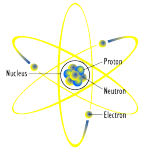

It is almost similar to the covalent bond. How do you know if a bond is a dative bond?Īns: A dative bond can be identified by the arrow which points from the atom donating electrons to the atom accepting electrons. This is because once the coordinate bond is formed there lies no difference between the normal covalent bond and the coordinate covalent bond. Are coordinate covalent bonds stronger or weaker than regular covalent bonds?Īns: A coordinate covalent bond is of similar strength compared to that of the covalent bond. From dyes and pigments to chemotherapy, from bio-inorganic chemistry to synthetic detergents, all are composed of coordination compounds.



Common ligands are ammonia \(\left(\) to the protector of ultraviolet radiation, ozone.The metal ions act as lewis acid (acceptor) or electron-deficient species. These lone pairs of electrons are donated to the metal ions. Lewis bases or ligands are neutral molecules or ions that contain lone pair of electrons. The reaction between Lewis acid and base is a coordinate covalent bond.However, nonmetals can also participate in this bonding. This kind of bond is typically observed in the bonding of metal ions to ligands.In the case of a coordinate covalent bond, one atom supplies both of the electrons, and the other atom does not supply any of the electrons. In the formation of a simple or ordinary covalent bond, each atom supplies at least one electron to the formation of the bond – but that is not the case every time.A coordinate bond (also called a dative covalent bond) is a covalent bond (a shared pair of electrons) in which both electrons come from the same atom.If a coordinate bond is created between the atoms A and B, with A serving as the donor and B serving as the receptor, the chemical compound with its bond is represented as A → B. On this page let us learn everything about the coordinate bond in detail. An arrow indicates the direction of sharing. The other atom just receives the shared electron pair. A coordinate bond is formed by the sharing of electrons from a single atom. We use a wide range of chemical compounds that are created by coordinate bonds in our daily lives. It can also be produced in processes involving metal ions and ligands. Coordinate covalent bonds can be seen in processes involving two nonmetals, such as hydrogen atoms. Since it is a special type of covalent bond, a coordinate bond is also known as a Coordinate Covalent bond. Coordinate bonds may also be referred to as Dative bonds or dipolar bonds. In other words, the shared pair’s electrons are both from the same atom. It is an alternative covalent bond in which the electron pair is shared by only one atom. A coordinate bond is a subtype of a covalent bond.


 0 kommentar(er)
0 kommentar(er)
